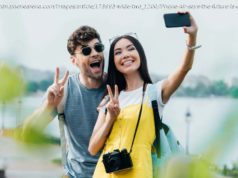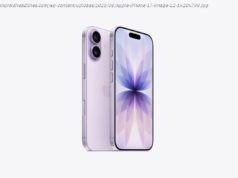Beats had a handful of different sounds on hand to test the Studio 3 ahead of launch. The demo was designed to showcase the range of the headphones’ new..
Beats had a handful of different sounds on hand to test the Studio 3 ahead of launch. The demo was designed to showcase the range of the headphones’ new adaptive noise-canceling technology — but there’s only so much you can get from a demo in that kind of controlled environment. The closest the whole thing got to real-world unpredictability was a desktop fan pointed directly at the headphones to simulate the annoying static crunch of wind.
The tech performed well in the demo — no surprise there. If you’re going to customize a couple of scenarios to show off your product’s top feature, you’re going to make sure the thing works. Over the week though, I’ve had the opportunity to try things out in a much more chaotic real-world setting — a little thing we call TechCrunch Disrupt.
Beats shipped a set to my hotel room in San Francisco, so this week I was the guy who was sitting out front by the stage wearing a big set of navy blue over-the-ear headphones trying to get some work done. My own rudeness aside, it’s actually a pretty ideal scenario for testing out the new noise-canceling feature.
There’s a lot going on throughout the day — speakers on the stage, the audience chatter and techno music beds playing between presentations, the din of activity seeping through the noise-dampening curtains from the showroom floor. Unlike the hum of a 737 engine, it’s not the kind of consistent sound it’s easy to program against.
Again, I was impressed. Transcribing audio is a pain in the ass, and the background sound makes it next to impossible to catch everything. With the headphones on and noise canceling fired up, it’s easy to remain blissfully oblivious to your surroundings. The company’s developed an impressive bit of noise canceling that works across a broad range of scenarios — I’m currently typing this from a window seat on an Airbus A320, and the Studio 3 are doing the trick drowning out the hum.
The adaptive noise cancellation is the latest step for a company that’s working toward becoming a more serious headphone brand. And, indeed, Beats has come a ways since launching as big, flashy, bass-heavy headphones. There’s still some legacy there, of course; the branding is still outsized on the products themselves, and the company pumps a ton of money into celebrity promos — including the constant stream of star spots you’re served up during every NBA game.
But the design product color schemes have trended toward the more subtle, and the company started delivering a subtler and fuller audio experience around the time it introduced the Studio 2, in an attempt to fulfill the promise of the record producers behind the company’s launch. The line has grown up a fair bit over the past few years — if you were put off by the brand’s sound in the early days and haven’t gone back since, it’s worth a revisit at your local big box store (just bring the disinfecting wipes).
Battery life is a big win. The company lists it as 22 hours with noise canceling and 40 hours without, so you’ll be able to drown out plane noise and screaming babies for the duration of the world’s longest flight (20 hours and 20 minutes, London to Sydney). When I got home from Disrupt each day, I found that I hadn’t made a dent.
Of course, the whole Apple acquisition means access to the W2 chip, so you get the same pain-free syncing as the AirPods. That’s a noted leg up for iOS users — Android owners will have to grapple with the same old syncing process.
Bluetooth has come a long way in terms of both sound quality and connectivity, so you’ll be able to walk a decent distance away from the sound source without dropping signal. And, of course, there’s a wire in the box for when that’s the preferred way to connect. Weirdly enough, charging happens through microUSB — which feels a little antiquated for a pricey set of headphones.
Speaking of, that’s easily the biggest deterrent here: $350 is a lot to pay for a pair of headphones. As of this writing, that’s about $20 more than the QuietComfort 35, from the notoriously expensive Bose. That price gets you Beats’ most well-rounded headphones to date, but for most users, it’s probably a bridge too far.






